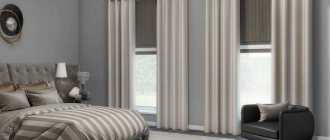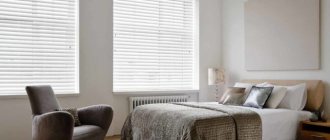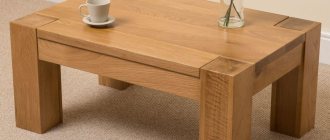Main functions
The purpose of curtains for the kitchen made of threads is considerable. They are used when zoning space. Previously, for this purpose there were screens and partitions - bulky and not always attractive in appearance.
The airiness and transparency of thread curtains will wonderfully create dining and work areas. Also, muslin curtains can perform a purely decorative function. Curtains of different sizes and colors will look advantageous here, in combinations with beads, pom-poms, and plant elements.
Sometimes they act as doors. The door leaf will be successfully replaced by an elegant thread curtain. On bright and sunny days, the room will be protected from the abundance of light; on cloudy weather, on the contrary, it will not become too dull.
Advantages and disadvantages
Window design requires careful selection of material. Designers often suggest using thread curtains in the kitchen interior. These curtains create a pleasant atmosphere in the room. And, importantly, they have a lot of advantages.
- Contribute to the visual expansion of space.
- A variety of colors allows them to be used in various interiors.
- Thanks to its simple design, it is easy to attach. How to hang thread curtains - this question will not take you by surprise.
- They do not interfere with air exchange.
- They allow the penetration of sunlight and, if necessary, shade the space.
- Perfectly combined with various types of curtains, curtains, blinds.
- They are protected from contamination by special impregnation, so maintenance will not take much time and labor. Easy to wash.
- An excellent component for decoration and zoning.
- Synthetic threads do not unravel or fray when trimmed, which allows you to modify them yourself.
- Functional, practical, durable.
- They help create an original, unique design.
- Reasonable price of products.
Like any other product, filament curtains also have negative sides.
- To create efficiency, you will need more than one set, since muslin curtains look beautiful at a certain density.
- There is a risk of threads getting tangled. However, this often occurs from improper storage or washing.
- The accumulating static electricity is a kind of magnet for dust.
- Unsafe attention for small children and pets.
How to hang and care
To hang muslin correctly, you should follow the instructions. Thread curtains can be attached in several ways:
- The basis of any product is threads, a border and a pocket into which the cornice is inserted. In this case, you just need to put the muslin on the cornice;
- if you need the curtain to be held on hooks, then you need to sew the braid to the border;
- You can fold the border in half and simply put it on the cornice.
The curtain must be carefully fastened so that the threads do not get tangled together. To prevent this, you can tie them with tape. When the muslin is hanging in its place, the ribbons can be untied. If the threads are too long, no need to worry. You can simply cut them to the desired length.
The photo of the muslin in the kitchen shows the methods of fastening.
Compared with other types of curtains, thread curtains are less likely to get dirty and dust does not settle on them. But they still need to be washed periodically. You can use dry cleaning services or wash it yourself in the washing machine.
In the latter case, you need to follow the instructions:
- do not allow threads to tangle. They can be knitted in several pieces;
- curtains, when tied, should be placed in a washing bag (if this is not available, then you can use ordinary nylon tights);
- place in the washing machine and select the delicate cycle;
- After washing, hang the muslin in its place and untie the threads. The curtain will straighten itself, and it does not wrinkle.
Popular types
The curtain market has now been replenished with a new, modern product - thread curtains. The attitude towards him is not the same. Some people are delighted by the elegant visual effect. Others question whether it will be practical.
A huge assortment allows you to decide to experiment. It doesn’t hurt to get acquainted with the types of this product.
Thread curtains are divided into three groups by type: plain (includes over sixty shades), multi-color (creating a rainbow effect) and decorative (requiring careful adherence to measures).
An ordinary plain muslin is a single-color curtain made of thin threads of various sizes. Rainbow muslin differs from the usual color scheme. The threads are dyed in different colors. Melange, as well as fibers with smoothly transitioning colors from one to another, create a bright environment. Here you can find a spectrum of shades of one paint and a combination of different colors.
The muslin made from threads with woven veins, made from fabric with the addition of lurex, looks great. It is a beneficial addition to the interior. This curtain is associated with the holiday.
Very beautiful and unusual threads - panels. The dense arrangement of threads creates impressive pictures.
Threads with beads and glass beads will add a splash of brightness and liveliness to the atmosphere of the kitchen. They come in various shapes (hearts, diamonds, drops, stars, etc.). And they are attached in different ways (at random, at the end of the thread, in stripes, in a checkerboard pattern).
Thick, spiral, twisted stripes give the room uniqueness and originality.
Thread curtains made of soft plush threads with pompoms look beautiful.
Unusual options with butterflies, feathers, sparkles. Curtains of this type will give the kitchen a bright, cozy look.
The simple appearance of thin, wide, noodle-like threads will bring softness and tranquility to the environment.
Tips for choosing colors
The correct selection of muslin colors is no different from a similar procedure with other curtains. The main thing is to take into account the parameters of the room for which they are intended. The area, although it is one of the necessary formats, does not matter much, because thread curtains are appropriate everywhere. But the color of the walls and furniture plays a fundamental role.
To prevent all components from merging and creating a faceless effect, the color of the curtains should be chosen one or two shades darker or lighter than them. The exception is the snow-white interior. A muslin combination of white and gray flowers will help add expressiveness to a white kitchen.
If the wallpaper or painting is done in beige or pale yellow tones, you can use curtains in polar colors. Delicate olive muslin will look amazing against a pale green background. But, in any case, such curtains in the interior are very rarely used to create a bright window spot.
The choice of muslin color depends on the decorating objects and the degree of illumination of the space. Designers give preference to original color combinations, such as:
- gray and wine;
- turquoise and olive;
- white and blue;
- terracotta and red;
- golden and white;
- gray and turquoise;
- black gray.
Basic selection rules
The first thing you need to pay attention to is the commercial appearance. The threads should be bright, smooth, without hesitations. Secondly, you need to test the strength by slightly pulling it. Such curtains are very durable and have a long service life. Third, pay attention to color. The color of the filament curtains should match the color scheme and style of the entire kitchen. There are several principles that you can follow when choosing the color of thread curtains in the kitchen from the photo:
- The color scheme of the curtains matches the color of the kitchen. In this case, you will achieve complete harmony of style and ebb.
- Contrast. The complete opposite of colors creates the effect of severity.
- The color of the curtains matches some bright or functional highlight of the kitchen. For example, the color of curtains is matched to the color of the tabletop, or to the color of furniture, in general.
Bright blue threads will not fit in a room painted green. Since the curtains in question are suitable for any direction of interior design, here you need not to overdo it with accessories and coloring. For example, if the kitchen is made in high-tech style, then the curtains for the kitchen, the photo of which shows that they should be selected in a single color, preferably with a metallic shade, or even better, solid structures. The classic design will be complemented by thread curtains in languid tones in several levels.
Do not forget about the windows facing the sunny or north side. A dimly lit kitchen will be further depressed by dark-colored curtains. Here it is better to choose bright colorful or light colors.
Combinations with other styles
The classic design of a kitchen window - drapes, tulle, lace curtains - ceases to amaze and deprives the interior of its individuality. Products made in the likeness of threads open up endless possibilities in kitchen interior design.
These works of textile art can be combined with any style, becoming an amazing decorative element. You cannot use them without taking into account the interior design style, as they can ruin the entire appearance of the room.
Kisey with decorative inclusions is used with great care.
Curtains decorated with feathers, beads, butterflies and other decorative elements are inappropriate in the style of classics, hi-tech or minimalism, but will become a real find in the empire, pop art, and retro genres. White thread curtains, not complicated by additional decor, enriched with curtains and lambrequins, will perfectly emphasize the severity of the lines and the sophistication of the antique style.
The splendor and brilliance of the Baroque style interior will be emphasized by muslin of a deep, noble color. Interspersed beads will not be out of place here, and drapery, tassels and tiebacks, and soft curtains will complete the look. Thread curtains are comfortably woven into the oriental style.
The modern Art Nouveau style allows you to experiment using thread curtains made of new materials (glass, plastic). Color, shape and decorative elements accentuate attention.
The classic style prefers multi-layer curtains - various combinations of muslin, formal curtains, and lambrequins. Their distinctive feature is a pastel range of shades without any decoration.
The minimalist style also uses muslin for interior decoration. The best option for this look are plain, non-garish thread curtains, excluding additional decoration.
Eco-style lovers have a wide selection of curtains made from natural materials. Products made from cotton, linen, and bamboo are perfect for creating coziness.
High-tech, featuring furnishings made of chrome and glass, will be decorated with metal beads on threads and curtains with lurex.
For the Provence style, the decoration will be curtains in the form of ropes and ropes.
How to make thread curtains yourself?
Even an inexperienced housewife can make muslin. To do this, you only need curtain material: threads or wide ribbons and decorations. Also possible are muslin options made from shells, feathers, buttons, beads, and strips of fabric. Decorations can be bugles or large beads to weigh down the threads. To make handmade curtains look like store-bought ones, it is best to use viscose. This material shimmers and flows in the sun.
Even an inexperienced housewife can make muslin. To do this, you only need curtain material: threads or wide ribbons and decorations.
Thread curtains can be made from different materials.
- Artificial fibers. These are very thin threads that are susceptible to the accumulation of static electricity on their surface. You should pay attention to this when choosing raw materials.
- Twine and laces will fit very well into the interior in combination with beads, sequins and various decorations.
- Ribbons of different widths. The most easily soiled curtains will be made from this type of material, but they look very original in combination with decorations.
- The fishing line will allow you to create curtains from buttons, corks, and beads. If possible, you can make muslin from semi-precious or precious stones.
- Thick threads made of wool with various thickenings in the form of pompoms, lurex. However, this unusual decoration may not suit all types of interiors.
Important! From the point of view of practicality, muslin with feathers and pompoms is not suitable for the kitchen interior.
- Measure the window opening and select the required space between the threads.
- Take the base. This can be a wide strip or a wooden plank.
- Cut the threads to the required length.
- Fold the ribbon in half and place the middle under the base.
- Pass the ends through the base and tighten. You will get a knot.
- Secure with hot glue.
- Secure the ends by burning or tying knots.
See also: How to choose a large kitchen design?
Proper care
A stained thread curtain can be updated in two ways: use dry cleaning or do it yourself. The first option is clear; in the second, some rules and procedures must be followed.
- Straighten the hanging curtain.
- Tightly tie a cord along its entire length every fifteen centimeters of threads. On curtains with beads and other decor, reduce the tie distance to ten centimeters.
- Remove the curtain. (Do not change the sequence of the second and third points, otherwise the threads will get tangled).
- Place in a special washing bag, use delicate cycle.
- If it is slightly dirty but highly decorative, you can wash it in a soapy solution and then rinse it by hand. In this case, the curtain must also be tied. The water temperature should not exceed forty degrees.
- Fasten the curtain in place, carefully straighten it, but do not iron it.
If it is necessary to adjust the length of the curtain fabric, cut it with ordinary scissors. To avoid trouble, you should wet them before shortening, thus avoiding shrinkage later.
All kinds of designer fantasies regarding kitchen design can be realized with the help of thread curtains. An amazing product that can change your mood, its aesthetic image, practical properties and reasonable cost are the reason to purchase this miracle. By turning to a professional, your kitchen will become your pride.
How to hang muslin in the kitchen: step-by-step instructions
There are several ways to secure thread curtains to a window or kitchen doorway.
Using drawstrings or eyelets
It is very simple to hang a curtain made of threads on a pipe cornice, complemented by a special fabric “pocket” or rings sewn into the upper part of the curtain. You need to carefully remove the cornice from the wall, string the product onto it and secure the pipe in its original position.
Using alligator clips
“Crocodiles” are special small clips that allow you to secure the curtain to the ceiling cornice. First, they are fixed along the entire length of the upper fabric strip of muslin (at an equal distance), and then one by one they are inserted into the track - rail - cornice. After this, you need to install a stopper; it limits the movement of the clothespins and prevents the curtain from “running away”.
Using hooks and curtain tape
If there is no special tape at the top of the muslin, you can sew it on yourself. To do this, the fabric strip on which the threads are held is folded from the wrong side two or three times (depending on the original size), and the desired element is sewn to it. After this, hooks are strung onto the tape, which are then either inserted into the cornice or hung on it.
How to sew a ribbon to the top of the muslin yourself:
How to properly hang muslin using curtain tape and hooks:
Using Velcro tape
If the muslin curtain is attached to a profile cornice, doorway or arch, then in this case it is more rational to use a special Velcro tape. It comes in two types: with and without adhesive.
The first version of the tape is more convenient to use than the second. After all, all you need to do with it is divide it, glue the hard part to the cornice or arch, sew the soft part on the back side of the top fabric strip of the curtain and connect the two parts of Velcro together.
To improve the adhesion of the rigid part of the tape to the selected surface, you must first degrease the cornice or arch (in the place where the Velcro will be glued), and after gluing, warm up the fittings with a hair dryer and let it stand for 20 minutes.
If the Velcro tape does not have an adhesive base, then it must be separated and then glued to a previously degreased surface using a glue gun. As in the previous case, the soft part is sewn onto the curtain, and the hard part is attached to the cornice.
In addition to a glue gun, a construction stapler or small self-tapping screws will help to secure Velcro without an adhesive base.











